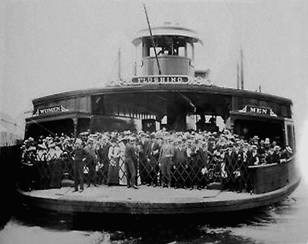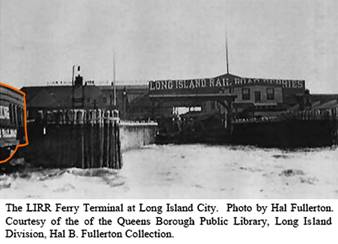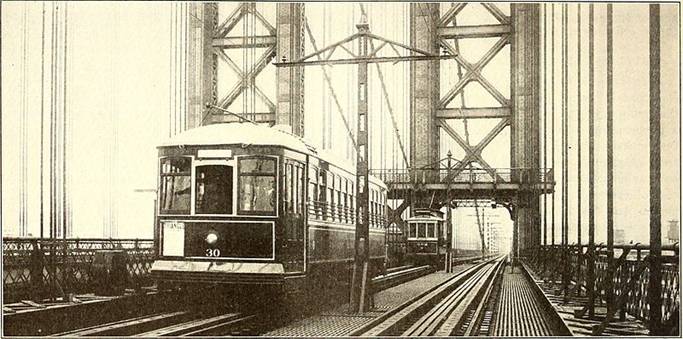Progress, But Not For Everybody
As the century continued, things changed, and sometimes they improved. Trains got more reliable, and they reached their destinations faster. By 1850, there was a railroad line in Manhattan, running south from the Bronx on a bridge across the narrow Spuyten Duyvil. Ex-ferryman Cornelius Vanderbilt soon acquired and improved that line, and he connected it to a few railroads upstate. People started to commute from the north. In 1871, profits from Vanderbilt's New York Central Railroad financed the creation of Manhattan's first imposing Grand Central Depot, which occupied 12 city blocks between Lexington and Madison Avenues.
Alas, Long Islanders got no Grand Central equivalent, but they did get improved ferry service, courtesy of the LIRR. The railroad bought ferries, built a ferry terminal at Long Island City, and established routes to destinations in three different parts of Manhattan. By the 1870s, the railroad had improved things further by introducing faster, more stable double-ended ferries, with iron hulls.

picclick.com

Long Island Historical Journal, Volume 17, Nos. 1-2
The Flushing, an iron-hulled LIRR side-wheeler ferry built in the 1870s. The sides of its bulging upper hull concealed the upper portions of its paddle-wheels.
An imposing venue, no? Highlighted on the left is a corner of the same ferry boat, the Flushing.
Meanwhile, elevated trains began connecting Manhattan neighborhoods in the 1870s, making more workplaces accessible to river ferries. In 1883, the Brooklyn Bridge made it possible for those who worked south of Wall Street to live further away from Manhattan. Streetcars ran from the City Hall area in Manhattan over the bridge to Brooklyn (near the LIRR terminal) and beyond, into Queens. In 1904, the first NYC subway opened, speedily connecting more neighborhoods in Manhattan. More New York City jobs than ever were within reach of ferry commuters.
The ferries, however, could not keep up. Only so many ferries could safely travel in close proximity at any given spot in the harbor. The faster ferries went, the more space they needed between them. The bigger their passenger capacity, the slower they went, andthe more time they needed to load and unload. It seemed that the East River ferry services could never move enough people fast enough to cease being an impediment to long-distance commuting.
***
New York City took bold steps to improve East River movement between Boroughs. By 1910, there would be four bridges across the East River, all of them moving people via public transit (all carried streetcar lines; three of them also carried either elevated lines, or subway lines on above-ground forays). Intra-city commuting was booming.

Streetcars on the Manhattan Bridge; subways also traveled across the bridge
Smithsonian.org
Hudson River ferry services prepared for their demise as construction of tunnels for the Hudson and Manhattan Railroad (the predecessor to PATH) progressed. When the line opened in 1908, mainland commuters could reach Manhattan via rail from both the Bronx and New Jersey. Unless they found ways to get from the LIRR to local transit lines over bridges, Long Islanders still had to resort to ferries in order to set foot on Manhattan.
***

